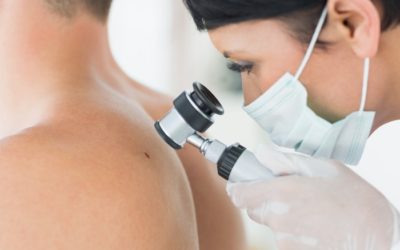THE LIFE EXPECTANCY OF WOMEN IN SWITZERLAND HAS INCREASED FROM 79 YEARS IN 1981 TO 86 YEARS IN 2016!
The age of menopause has not changed since Aristotle (-384 BC) and is between 48 and 52 years old for the majority of women! All women go through menopause, without exception! The math is quickly done: in Switzerland, women will live more than 30 years without hormones, by 2050 over 50 years. This is not without consequence. Obviously, at the time of menopause, there is the stop of the rules, the vapors, the mood disturbances, the sleep disturbances, vaginal dryness, etc …, which poison your life; What about the long term consequences of a lack of estrogen, progesterone, and male hormones (and yes, testosterone is produced in our ovaries)?
LOWER ESTROGEN LEVELS LEAD TO LOSS OF BONE MASS…
The skeleton is not inert and throughout life, it molds itself (child, we grow up) then remodels: the old bone is destroyed by osteoclasts, this is resorption while osteoblasts make new bone, that’s training. This bone remodeling runs continuously over periods of 3 months.
Lower estrogen levels in the blood cause loss of bone mass … by accentuating the resorption without accentuating the formation of which the depletion of the bone but also and above all its weakening at the origin of fractures: it is osteoporosis. Many studies have shown that estrogen therapy – initiated as early as menopause – prevents bone loss by restoring a balanced remodeling between resorption and formation. In the absence of treatment, especially in women at risk (underweight, heavy sports, smokers, who have had late puberty and/or long periods without menstruation), the likelihood of developing osteoporosis within 30 years after menopause increases exponentially with consequence the round back, the vertebrae which compress, the neck of the femur or the wrist weakened which break at the slightest fall.
In conclusion, THM (Hormonal Treatment of Menopause) started at menopause remains the most physiological anti-resorptive treatment and prevents fractures in all women, especially those who are at risk and of course those who have a life expectancy of over 80 years, which becomes a majority among baby boomers.
CARDIOVASCULAR DISEASE KILLS MORE WOMEN THAN BREAST CANCER
Since May 1968, some women have “adopted” risky behaviors such as smoking, stress, physical inactivity, overeating leading to obesity, metabolic syndrome, diabetes, high blood pressure, etc. For these In women, the first concern will be to control cardiovascular risk factors before considering an HRT. On the other hand, for all women who are “fit” at 50, of more or less normal weight, active, aware of the value of their health, THM decreases coronary events when it is started before the age of 60 or within 10 years of the onset of menopause. This “cardio-protective” effect of estrogen, before menopause, was shown in the years 1960-1970, to a time when women did not smoke. Estrogen therapy protected the “castrated guons” of arteriosclerosis.
In 2002, the WHI (Women Health Initiative) study caused a cataclysm by claiming that estrogen is given to average 64-year-old American women, mostly obese, some smokers, or even diabetics, increased cardiovascular accidents! This may be true for this category of women but not for those who do not have this profile and who are treated after menopause.
THE BENEFICIAL EFFECT OF ESTROGEN IS NOT LIMITED TO THE PREVENTION OF OSTEOPOROSIS AND CARDIOVASCULAR DISEASE
Estrogen, female hormones par excellence, also act on the texture of the skin (thin and soft), muscles, brain, mucous membranes (especially urinary and genitals), hair, the distribution of fatty tissue on the buttocks rather than on the stomach, mind, in short everything that makes us women.
THEREFORE, WHAT IS THE HORMONAL TREATMENT FOR MENOPAUSE AND HOW LONG IS IT?
After menopause, our ovaries no longer produce androgens, estrogen, or progesterone. For estrogen, the transdermal route is preferable to the oral route to avoid the first hepatic passage. What does that mean? When you take oral medication (tablet or capsule), it is digested and then most often transformed in the liver into “catabolites” or “by-products”. In passing through the liver, natural estrogen (estradiol = E2) produces a powerful estrogen, estrone (E1), which will stimulate the production in the liver of proteins involved in the transport of cholesterol (the good HDL), the transport of different hormones including androgens but also coagulation factors and factors responsible for high blood pressure. Therefore, when taken by mouth as a tablet, estradiol may increase coagulation factors and the risk of thrombosis and embolism in people at risk.
Estrone (E1) promotes water retention, breast tension, and some grip weight. Estrone (E1) accentuates the decrease in growth factors due to age, which leads to a relative loss of muscle mass and the development of the “tire”. To avoid the disadvantages of the first hepatic passage, we will therefore favor the route transdermal (through the skin) gel or patch.
WHAT IS PROGESTERONE USED FOR?
The uterus or the womb is the cocoon in which the embryo from the fertilization of an egg (oocyte) by a sperm. It is, therefore, necessary to prepare it for the course cycle: during the first phase (from D1 to D14), it is the estrogen that will develop the endometrium (what I call the carpet) from 2 to 10 mm, this is the phase proliferative. After ovulation (egg-laying), the corpus luteum in the ovary produces progesterone to prepare the cocoon for gestation. Progesterone in the endometrium will block the proliferative effect of estrogen, alter the appearance of the carpet in “uterine lace” and above all to calm the uterus so that it becomes more welcoming. In summary, progesterone is the hormone essential for gestation in the first 12 weeks of pregnancy.
WHAT IS ITS ROLE AFTER MENOPAUSE?
Theoretically none, except for postmenopausal women who still have their womb and which will be treated with estrogen. In this situation, prescribe progesterone to prevent the proliferation of the endometrium under the influence of estrogen and the risk of developing hyperplasia (thickening), polyps, or even endometrial cancer. A “hormonal” IUD containing progestin also prevents the development of the endometrium for a period of 5 years. But progesterone also has effects on the breasts: it acts in synergy with estrogen to induce the development of acini (the mammary gland) but it inhibits also epithelial mitosis caused by estrogen depending on the phase of the cycle hence the importance of the choice of progestogen in the THM of women who have their womb. Progesterone also has other effects including a sedative action, an anti-aldosterone action that promotes urinary elimination of salt and water, probably an active stimulant of myelin (nerve fiber), etc. We, therefore, use natural progesterone micronized vaginally (like eggs) to promote implantation of the embryo in the endometrium in the second phase of the cycle (as a treatment for fertility). Taken by mouth at bedtime, natural micronized progesterone has an effect on sleep, on sweating, and nocturnal “heat”, often desired, via its hepatic metabolites, with no other negative effects on the liver. Percutaneous absorption of progesterone (gel or cream) should be reassessed for its antiproliferative action in the endometrium. In contrast, progesterone gel/cream is well absorbed in the breasts and reduces breast tension (mastodynia).
WHAT ABOUT ANDROGENS?
A 2001 study indicates that 60.7% of women are sexually active between 50 and 59 years old, against 44.9% between 60 and 69 years old and 28.2% between 70 and 79 years old. But that was in 2001! One of the causes of this decline is vaginal dryness, a physical consequence of postmenopause and estrogen loss. The women also need testosterone, the preeminent male hormone, for the ovaries to stop producing in post-menopause. As in men, testosterone deficiency causes to gain weight: less muscle, more belly, less energy. After menopause, production by the adrenals of DHEA (de-hydro-epi-androsterone), a male hormone precursor of testosterone, maximum at the time of puberty, also declines, which worsens the androgen deficit and lowers the libido.
IN CONCLUSION, HORMONE THERAPY FOR MENOPAUSE (THM) ASSOCIATES:
• estrogen
• progesterone (for women with their uterus or nighttime problems)
• possibly androgens (DHEA, testosterone)
• vitamin D3 if necessary
• calcium if necessary
Not to mention a proper diet and regular physical activity.
WHAT ARE THE REAL RISKS OF DEVELOPING BREAST CANCER UNDER THM?
In 2002, the WHI (Women Health Initiative) identified 21 cases of breast cancer in 15,000 untreated women (average age 64), after 2 years of observation. This 21 corresponds to a relative risk of 1.0 (RR = 1.0). There were 26 cases of breast cancer in 15,000 women treated with estrogen extracted from mare urine and especially by a progestin (synthetic progesterone) of the MPA type (medroxy-progesterone-acetate), ie 5 more cases in women treated for 2½ years. This digit of 5 increases the relative risk (RR) from 1 to 1.2, i.e. + 20%, whereas the absolute risk does not increase by 0.03% in treated women compared to untreated women. It is therefore this increase in relative risk of 20%, widely used by media, which caused panic. For women who no longer had a uterus (hysterectomy) and who were being treated only with estrogen, the increased risk relative was no longer meaningful. Since 1990, in France, an epidemiological study among women from the National Education, the E3N study, observed a cohort of approximately 100,000 female volunteers French women born between 1925 and 1950. The latest data from the E3N study confirms the absence of increased risk of breast cancer (RR = 1.0) with THMs combining estrogen and micronized natural progesterone, even during treatment of long term (6 years and over). Similarly, with the combinations of estrogen and hydrogesterone (isomer of progesterone), there is no significant increase in the risk of breast cancer (RR = 1.16), even with long-term treatment.
IN SUMMARY: BREAST CANCER AND THMs: IT ALL DEPENDS ON THE NATURE PROGESTOGEN
These results of the E3N study are therefore very important for the identification of THM having the best benefit/risk profile. Unfortunately, some media, including the Lancet in 2019, ignore this study and continue to treat naturally or physiologically occurring menopause that women must assume with “zenitude” despite the vapors, profuse sweating, trouble sleeping, vaginal dryness, withering skin, hair, and buttocks who fall, the mood at half-mast, etc … while all these “inconveniences” can be avoided and treated with adequate hormone replacement therapy for menopause and adapted to each one. These same media – often orchestrated by women – forget that menopause at around 50 is no longer “physiological” for baby boomers in their 60s years and over, who feel in great shape, active and who want to stay that way! Unfortunately, for some women who have suffered from breast cancer or who are very high risk like Angelina Jolie, any THM is not an option. The contraindication is relative for those who have a history of thrombosis or embolism as long as the transdermal route for estrogen is used. The cancer of the endometrium should not be forgotten, even if it is infrequent, hence the need for all women who have their matrix to perform gynecological examinations annually. The relationship between THMs and ovarian cancer is unclear, but it appears that the increase in risk is statistically significant but minimal in terms of absolute risk. Fortunately, ovarian cancer, which is difficult to diagnose early, remains a very rare cancer.
CONCLUSION:
What are the reasons for hormone replacement therapy for menopause today? is it not offered to all “young” menopausal women who want it and who have no contraindications? Why limit the duration of treatment to 5 years for women who have a life expectancy of 80 years and over, who are active professionally beyond retirement age, and still have a sex life? For all these women, of which I am a part (I work full time at 74 years old), I wish that studies including E3N rehabilitate THM by objectively analyzing the report long-term benefit/risk and “relieves” their users! I have been heard since, in late 2016, in an article in the New England Journal of Medicine, the authors of the WHI regret the erroneous interpretations of the study and add that hormone replacement therapy for menopause brings more benefits than risks. In addition, in June 2017, the North American Menopause Society updated these recommendations: hormone replacement therapy for menopause should no longer be routinely stopped for women 65 years of age and over as long as it is appropriate for each of them (dose, duration, type and route of administration of treatment). Oral micronized natural progesterone at bedtime (up to 300 mg/day) reduces vapors and night sweats and improves sleep! Progesterone micronized natural is less thrombogenic than other progestins. She can also be prescribed for hysterectomized women who have mainly nocturnal symptoms. Hormone replacement therapy started before the age of 60 or within 10 years after the onset of menopause significantly reduces overall mortality!
Today, we can say that the rehabilitation of hormone therapy for menopause is in progress. Unfortunately, some media remain focused on the WHI study of 2002 and the Lancet article from August 2019 which overlooks the study data French E3N demonstrating the lack of increased risk of breast cancer associated with micronized progesterone. We can only regret that this article, the results of which are wide open to criticism, once again focuses only on assessing the impact of THM from the perspective of breast cancer, without mentioning its beneficial effects on symptoms of menopause, cardiovascular risk, and osteoporosis.
Read also: www.catherinewaeberstephan.ch :
« Ménopause, avant pendant et après » version 2019
« La ménopause autrement … après 60 ans » édition 2016











0 Comments